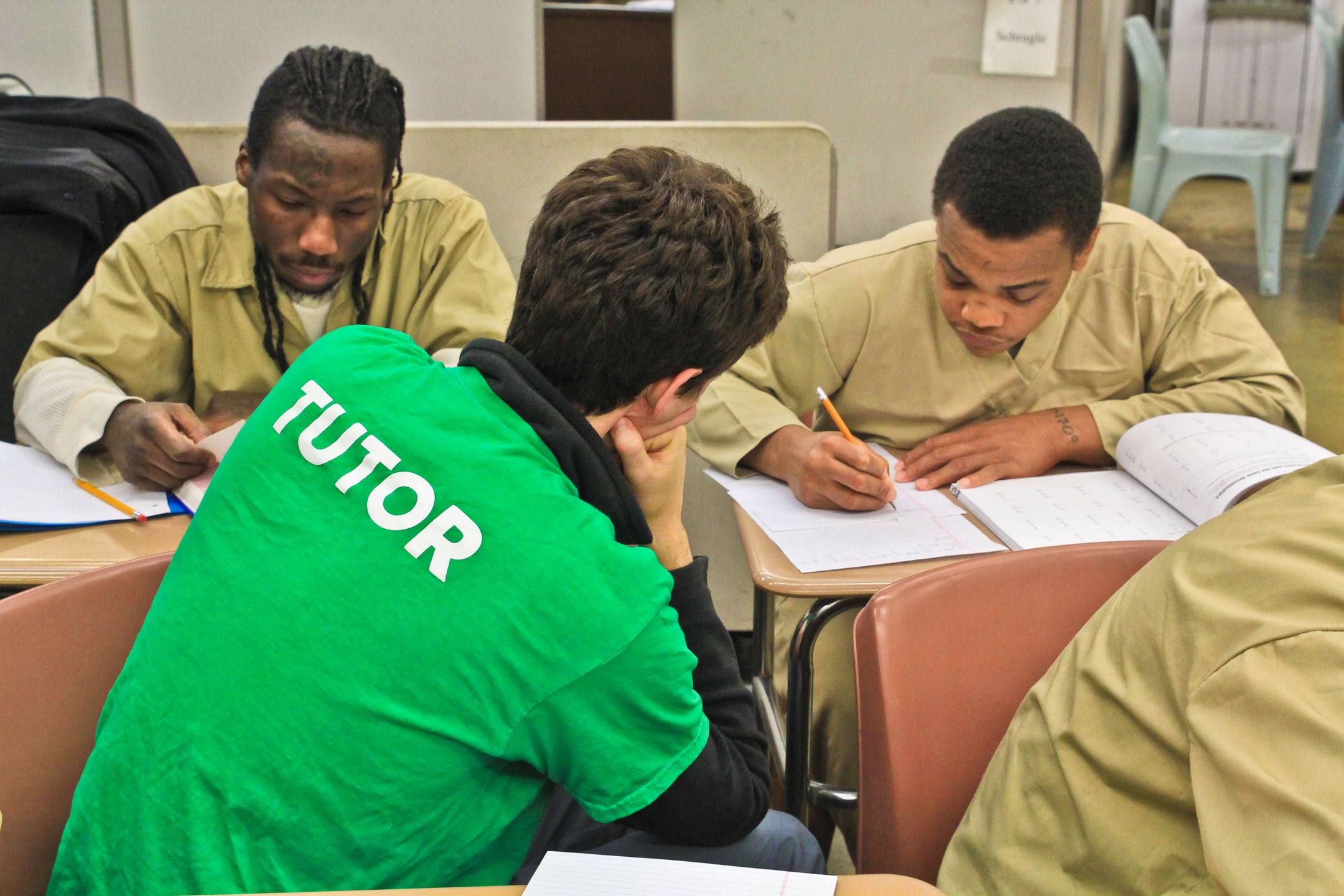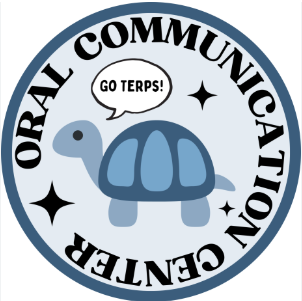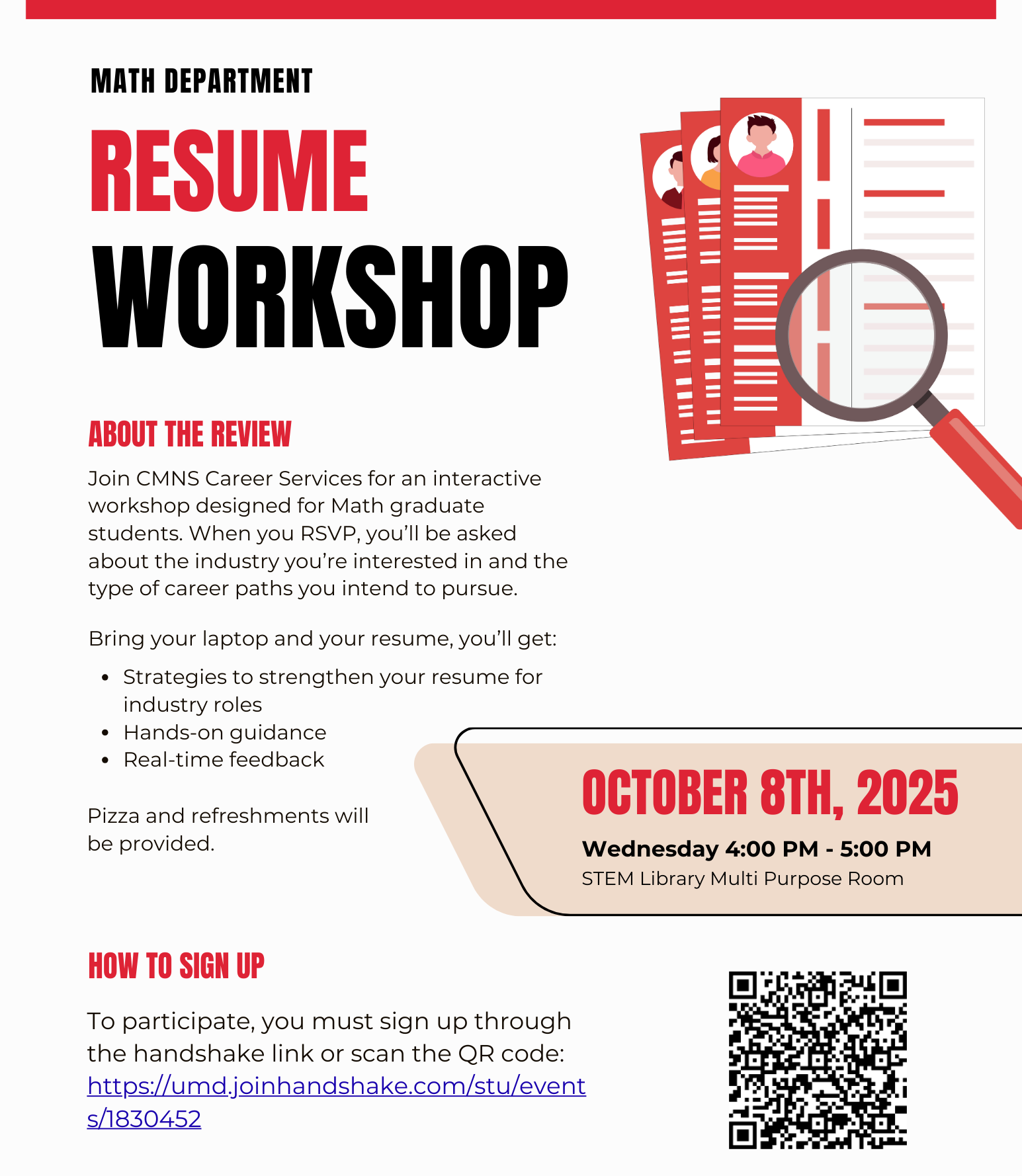
Dr. John FourkasAssociate Dean for Faculty Affairs, University of Maryland CMNS
Over the past 50 years, tools have been developed to help those who need to use math but are not confident with their abilities. Examples include calculators (followed by programmable calculators and then graphing calculators), spreadsheet programs, search engines, symbolic manipulation software and websites, and now even generative AI. Such tools have enabled great progress in STEM fields, and in society in general. But at the same time, the students we teach are becoming less and less mathematically literate on average. I see this in undergraduate courses that I teach. Students often come up with numerical answers that do not make physical sense, or express results with far too many significant figures because that is what appears on a calculator. The challenge of teaching students who do not think the same way you do is as old as education itself. One necessary aspect of bridging this gap is empathy—in particular, being able to know what your students do not understand and why, and recognizing that they likely do not have the same comfort level with math that you did at their age. With the shortcuts that are now available, there is less and less impetus for students who do not intend on becoming mathematicians to learn how to think mathematically and to gain a greater level of comfort doing math. As educators, we understand that it is fine to use tools as shortcuts once you understand how to do the tasks that the tools perform on your own first. But how do we convince our students to take this approach, instead of using such tools on their homework from the outset? From a logical perspective, knowing that one will need to take examinations without the assistance of any tools should be a compelling argument for attempting to master all of the material in a math course oneself. There are many students who are motivated this way. At the When I teach undergraduates, on the first day of class I ask them, regardless of whether they are thinking about going to graduate school, to professional school, into industry, or pursuing any other career once they graduate, what skill will give them the biggest advantage over those with whom they will be competing. After giving ample chances to guess, I tell the students that everyone is looking for someone who has the skill to solve problems that have unknown answers. All of the top candidates with whom they will compete will know how to use Google, Wolfram Alpha, ChatGPT, and so on. But what will they do when faced with a problem without a known answer? The best way to learn how to solve problems with unknown answers is to work on problems whose answers are unknown to you, without resorting to using outside tools to perform tasks you should be learning to do yourself. It is useful to refer back to this idea throughout the course of the semester, both to the class as a whole and to individual students in office hours. This message will not reach everyone in your class, but I have found that it reaches enough of the students to make a discernible difference. |

Career Perspectives from Dr. Andrew Lauziere, AMSC '22Machine Learning Research Engineer, Galois
I graduated from the University of Maryland AMSC (Applied Mathematics) Program in Fall 2022, concentrating in statistics, computer science, electrical engineering, and some business school courses. After graduating with a PhD, I joined Galois, a computer science research company focusing on formal methods, cryptography, systems engineering, and machine learning. I leverage my experience in data-driven research, knowledge of statistical methods and design, and skill in software organization to collaborate with engineers of other backgrounds towards research goals. In my domain, machine learning projects are centered around trustworthiness, reliability, and leveraging large language models (LLMs) to perform verification and systems engineering. Contributing to the field requires keeping up with the fast-moving field of artificial intelligence as well as application scenarios; however, I strongly recommend students learn from UMD computer science colleagues in designing software which applies the novel mathematical techniques developed during research. More broadly, I encourage students to think about the big picture of their research, not just developing the insights to solve challenging problems. The ability to contextualize a solution to an existing problem is paramount for connecting with collaborators, clients, and other non-technical colleagues. While I see machine learning, especially AI agents and LLM design, continuing to gain traction, the field has seen large financial investments based on speculation of future capabilities. I would recommend students focus on fundamentals in machine learning, optimization, and algorithms, along with practicing implementing methods themselves (i.e. practicing software design). With a strong foundation, understanding next-generation machine learning, such as what comes after LLMs, will be easier than for those who rushed into the current hot topic too quickly. |

Dr. Kathryn Linehan, AMSC '24Computational Research Scientist, University of Virginia Could you briefly describe your current role and responsibilities? I am a Computational Research Scientist for the Data Analytics Center (DAC) within Research Computing at the University of Virginia. Research Computing runs on-prem HPC systems that UVA researchers can access. As a member of the DAC, I provide consulting and guidance to researchers who need to use our HPC systems for big data applications. My specialties within the DAC are AI/ML applications, and I work with researchers across disciplines, e.g., the School of Medicine, Biology Department, and the Frank Batten School of Leadership and Public Policy. I spend most of my time collaborating with faculty on their research projects and do traditional research tasks such as literature searches and data analysis, and other coding (Python, bash, etc.) to ensure efficient use of HPC. How have your career aspirations changed, or remained the same, since your time in the UMD Math Department? I had a bit of a non-traditional path and joined the UMD Math Department almost 20 What advice would you give to current students to find, secure, and thrive in an academic career or industry? I have always found networking to be very beneficial. Also, jobs change. What works in the beginning might not be a fit forever – change paths if you need to. If you could go back, what might you change about your time as a mathematics student and your career path? I would take stats classes! I only took a basic intro to stats class as an undergrad, but have needed more and more applied stats for the AI/ML and data analysis spaces that I work in. How do you continue to develop professionally and stay competitive in your field? I attend conferences and talks, complete online classes and trainings, and read when I have time. My team has a variety of expertise in the big data space, so I also find conversations with colleagues to be a great way to stay current. What do you enjoy most about your current job, and what are your future aspirations? I enjoy the interdisciplinary nature of the work and getting a glimpse into research problems in other fields. My job also allows me to keep up with current computing trends and I am always learning. |

|
|
|
"If you're interested in gaining teaching experience with eager but underprepared students, consider volunteer teaching through College Bridge with The Petey Greene Program (PGP) at the D.C. Jail. PGP helps criminalized people who are interested in higher education, but may not have the necessary foundation, gain fundamental skills through our nine-week courses. Our basic math course helps students understand math at a conceptual level, priming them for higher math. During weekly 90-minute sessions, instructors use PGP provided worksheets and practice problems to guide a class of 8-12 students on integers, algebra, geometry and other foundational skills. You will never meet people more eager to learn. Teaching College Bridge will give you experience working with students who need extra support. In addition to valuable teaching experience, Dr. Moira Marquis, College Bridge's administrator, will offer to observe your teaching. This observation can be used to grow as an educator or can be turned into a teaching reference letter, useful for your job market materials. If you are interested in teaching basic math with PGP please fill out this form and we will reach out to you. Thank you!" — Moira Marquis, PhD |
Volunteer Teaching Opportunity

Why Volunteer?
|

 |
About the Oral Communication Center (OCC)Need help preparing for a presentation, practicing a speech, or managing public speaking anxiety? The Oral Communication Center (OCC) offers free peer-to-peer consulting and interactive workshops to improve your speaking skills for academic, professional, or personal settings.
Open to all UMD students, faculty, and staff — Monday through Friday. Communication is a skill, and we’re here to help you strengthen it. Book an Appointment Learn More 📍 Skinner Building 2117 |



| Access the math jobs listings by clicking the link here. |

| Have questions or suggestions for our next newsletter? We’d love to hear from you! Feel free to reach out by emailing with your ideas or feedback. |






